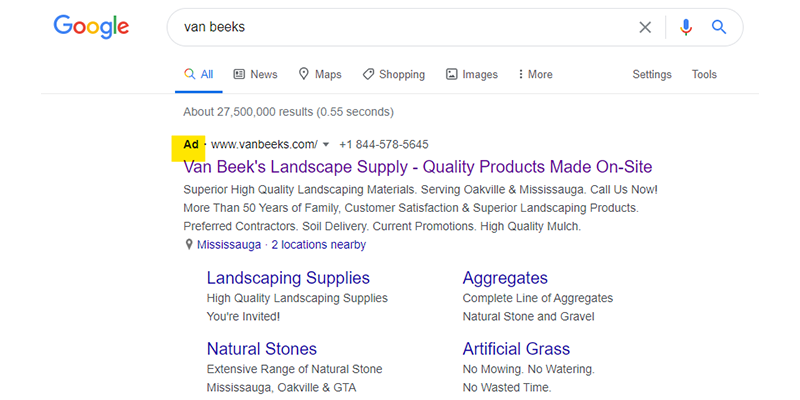Pay-Per-Click Advertising – All you Need to Know
For many business owners and professionals, some marketing tactics are more accessible than others. One area of online marketing that can be very confusing is pay per click. What exactly is it? A common myth is that it is a type of online marketing ad, usually a Google search ad, however, this is not entirely true. Pay per click is simply a model of online marketing where advertisers pay only when consumers click on their ad (i.e. you are paying for the action - in this case, a click). This is comparable to an impression-based model where you pay based on how many times your ad was displayed. In this case, you’re paying for visibility rather than per action. Pay-per-click ads are therefore ads that use the pay-per-click model – you only pay when the ad is clicked.
Types of Pay-Per-Click Ads
Now that we know what pay-per-click ads are, let’s talk about the different types of pay-per-click ads. Most of the online advertising platforms available today offer pay-per-click models of advertising on their platform however, the most common or well know type is the paid search ad. Others include Facebook ads, Instagram ads, Google display ads, and Google ads remarketing. What’s the difference between these anyway?
Paid Search vs. Organic Search: What’s the Difference?
Firstly, let’s talk about the difference between paid search and organic search results.
Quite simply, when your business pops up on a Google search ‘organically’ this is because your content is relevant to your customer’s query. While Google is smart and can often spot relevant local businesses that haven’t put in the extra SEO work, this organic placement is often enhanced by the strategic use of SEO techniques including relevant keywords and phrases. No direct financial contribution is utilized in showing up in organic search results (in other words, you can’t pay Google to show up organically).
On the other hand, paid search is just that: paid. This is when a business puts some money behind an ad (by bidding on relevant search terms) to improve the search ranking of the business, placing it at the top of the most relevant customer queries in the search engine, usually above organic search results. It's a great way to ensure that your services are front and center to relevant customers. It also helps to know that you only pay when a customer shows interest by clicking on your ad.
The Breakdown: Types of Paid Ads
Now, let’s dive into what you came here for: an explanation of all the different types of paid ads that can use the pay per click model.
Google Search Ads
These pay-per-click ads (PPC) are designed to appear at the top and sometimes the bottom of search engine results pages like Google. When creating these ads, certain keywords are selected that, when typed into the Google search bar, will trigger the ad to be placed for relevant search queries. These ads are marked with the word “Ad” to indicate to the consumer that the content is paid. Because they use a pay-per-click model, advertisers only pay when someone clicks on a search ad.
Google Display Ads
Google display ads are image-based ads that are shown across millions of websites and mobile applications. They are typically a visual representation of the product or service that is being advertised in an effort to reel in potential leads. The image will usually contain some text and a call to action.
These ads allow your business to target specific types of people you believe will be interested in your business with appealing ad formats including static images and GIFs. The targeting options available will help ensure you reach the right audience at the right time.
Google Ads Remarketing
Ever left a website only to begin seeing ads for that same website on another site? Possibly even the same product you were looking at? This is called remarketing.
Remarketing ads are designed to bring back previous site visitors who did not complete a desired action on your website by reminding them why they visited in the first place. This type of advertisement when properly executed works very well in comparison to other ads since the customer has typically already progressed along the ‘buyer’s journey.’
Facebook & Instagram Ads
When it comes to social media ads, Facebook reigns supreme. This is because Facebook, having acquired Instagram, is a “one-stop-shop” for many marketers wanting to gain business exposure on social media platforms.
These ads blend into a user’s feed or timeline, allowing advertisements to receive greater attention. These ads include both visuals and text to convey the ad’s key messages with a call to action (CTA) telling users what to expect when the ad is clicked on. Some CTAs available are ‘Learn More’, ‘Sign Up’, ‘Download’ etc. One additional advantage of Facebook ads is that in addition to showing up in several different places on Facebook (newsfeed, stories, in video, marketplace, etc.) they can also show up on Instagram!
Instagram ads are similar to Facebook ads, using visuals and text in a user’s feed and stories to convey a message. Unlike Facebook ads, however, Instagram ads will only show up on Instagram.
With both Facebook and Instagram, you have the ability to target very specific characteristics of your ideal customer. Demographics are generally used as the target criteria including gender, age, and interests, this allows for interesting targeting. An example of characteristics that we target when building a campaign for a landscape company are: relationship status, job title, interests such as home improvement, DIY in the home, where they shop, etc.
Effortless Pay-Per-Click Ads
With the variety of paid ads available, you are sure to find one that meets your business goals. Download our eBook for more information about PPC. Contact us to get started with your paid advertising campaign today!
Download your FREE copy of 10 PPC Landing Page Tips to Accelerate Your Revenue.


